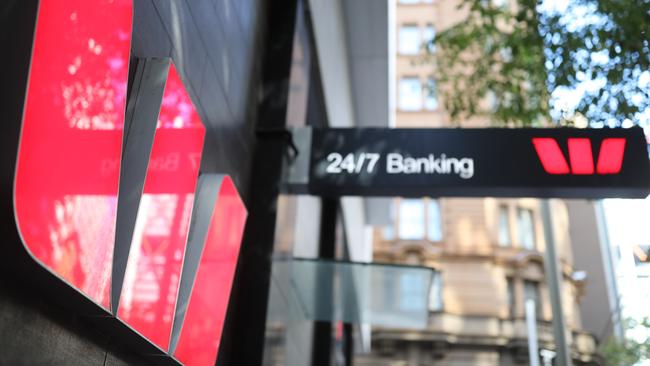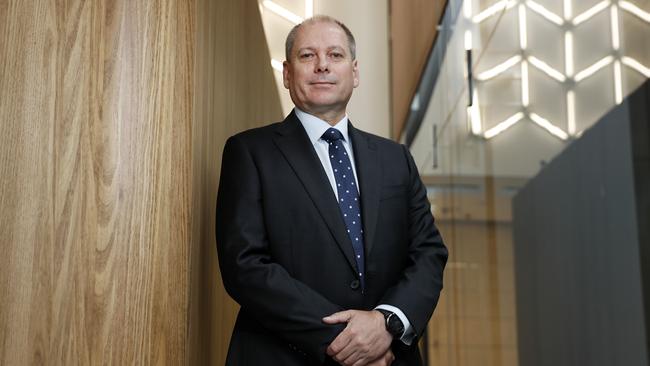Westpac backs housing boom as interim cash profit surges 256% to $3.54bn
Westpac has downplayed the prospect of regulators stepping in to curb the boom in house prices.

Westpac has downplayed the prospect of regulators stepping in to curb the boom in house prices and promised to slash $2 billion from its cost base within the next few years to become a leaner bank as it emerges from the COVID crisis.
A rapidly rebounding economy with consumer sentiment at a decade-high and a drop in soured loans, enabled the bank to more than treble its half-year cash profit from $993m to $3.5bn.
Westpac chief executive Peter King maintained his forecast that residential property prices would surge 20 per cent by the end next year, although most of the increase would now be front-ended into 2021 before housing supply constraints would ease next year.
He contrasted the current boom to previous cycles, saying the riskier interest-only segment was much lower with it just 16 per cent of flows.
“There’s not a lot of investor activity, and loan-to-valuation ratios are higher but that’s because of first home buyers,” Mr King said in an interview.
“Last time, there was more investor activity, high LVRs and more interest-only lending. It’s not happening this time.”
The Australian Prudential Regulation Authority has no mandate to contain growth in house prices, but is poised to intervene if lending standards deteriorate and risk ratchets up.
Mr King, however, agreed that APRA chairman Wayne Byres appeared to be less concerned about the level of systemic risk last week when he addressed a business lunch.
“That’s how I heard (the speech) as well,” he said.
Chief financial officer Michael Rowland delivered on schedule with a plan to address the bank’s bloated cost structure, pledging to slash more than $2bn from the cost base to $8bn by the 2024 financial year.

Expenses would rise this year but then fall sharply into 2024 as Westpac exited so-called non-core businesses, streamlined and digitised processes, and cut head office roles and corporate space by more than 20 per cent.
In excess of $200m a year would be stripped from the budget for third parties and contractors.
“I personally have responsibility for the program; we will get it done,” Mr Rowland said.
Despite recent chatter that Mr King could leave Westpac before the end of the year, he said on Monday that he expected to remain chief executive until the turnaround was executed.
In a flat, overall market, the bank outperformed its peers, with the result beating consensus estimates due to sharp drop in provisions for soured loans.
Indeed the bank released some of the funds set aside to covered bad loans as it saw an impairment benefit of $372m compared to an expense of $2.2bn a year ago as it was bracing for the COVID shock.
Mr King said he had never seen such a benefit in his banking career.
The stock lifted $1.25, or 5 per cent, to $26.23, compared to rises in a range of 1-2.2 per cent for its rivals.
Citi analyst Brendan Sproules said cash earnings were significantly higher than expected, but this largely reflected continuing uncertainty around the timing of writebacks in collective provisions.
“Consequently, we expect the focus to remain on core earnings, which were a more modest beat,” Mr Sproules said.
After suspending its half-year dividend a year ago due to COVID-19, Westpac turned on the tap again with a 58c-a-share payment, representing a payout ratio of 60 per cent.
The group’s return on equity climbed from 7.1 per cent to 11 per cent.
To consolidate its improved momentum and fix problem areas of the bank, including a poor risk governance culture which led to the $1.3bn Austrac penalty for millions of anti-money laundering breaches, Westpac said it would invest $3.5bn-$4bn over the next three years.
The bank’s statutory net profit jumped 189 per cent to $3.4bn, helped by a better performance from the consumer division.
Mr King said Westpac was starting to see the benefits of its new operating model through improved performance.
The Australian mortgage book increased by $2.6bn over the past six months, with good growth in owner-occupier loans partly offset by lower investor lending.
After well-documented loan processing problems hit volumes and resulted in market-share losses, Westpac said it was on track to match average growth for the major banks in the second half.
Elsewhere, the net interest margin suffered a four basis-point decline to 2.09 per cent due to the impact of rock-bottom interest rates.
The group’s common equity tier one ratio rose 153 basis points to 12.3 per cent.
Mr King said it had been a “promising” start to the year, with higher earnings, growth in mortgages and continued balance-sheet strength.
“First-half earnings were considerably higher than the prior corresponding period, mainly due to an impairment benefit reflecting improved asset quality and a better economic outlook,” he said.
“While the economic outlook is more positive, there is still some uncertainty and we have remained prudent in our impairment provisioning.”
After a challenging 2020, the Westpac chief said the domestic economy was rebounding, with consumer sentiment at its strongest level in more than a decade.
The economy was expected to expand by 4.5 per cent in 2021, supporting a 4.6 per cent increase in total credit and a 6.5 per cent lift in residential lending.
“Businesses are positive, with most industries responding to the brisk rebound in activity and the winding back of COVID-19 restrictions,” Mr King said.
Only a year ago, he said, the debate centred on whether the world would have a vaccine at all for COVID-19.
While there were a number of vaccines now, the logistics of rolling them out was more difficult than expected, although the challenges would be fixed.
“So the recovery’s really been a domestic recovery; you see it in the forecasts - the fact that we’re talking about unemployment at 5 per cent at the end of the year,” Mr King said.
“There’s the risk of needing to manage an outbreak but it’s gone pretty well because the tracing’s been broadly effective.
“So I’m probably more (in the camp of) how do we solve these challenges, how do we get the population vaccinated, and then that domestic activity gets shored up.
“The international borders is a more complex picture because you’re in a world where there’s different levels of vaccination, so that’s probably going to be a bit longer than we hoped.”







To join the conversation, please log in. Don't have an account? Register
Join the conversation, you are commenting as Logout